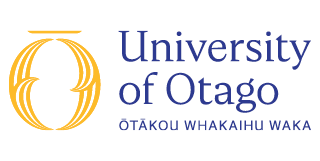Overview
An introduction to civil engineering materials, stress analysis, fluid mechanics, hydrology and technical drawing.
A surveyor's job often includes the majority of the civil engineering tasks associated with land development. In this paper, students are first introduced to fundamental concepts in classical mechanics with a focus on kinematics and force balances. Students then learn about the uses and behaviour of materials commonly encountered by surveyors in an engineering context, including: the concepts of stress and strain, properties of materials, design stresses, static loads, shear forces, bending moments, bending stresses in beams and stress calculations. The paper further provides an introduction to fluid mechanics, including: energy concepts, continuity and conservation of energy, applications of the Bernoulli equation to flow measurement, flow of water in pipes, conservation of momentum, flow of water in open channels and flow capacity of culverts.
The last module provides an introduction to surface water hydrology concepts, including storm event rainfall and stormwater run-off calculations and drainage system design and management.
Running in parallel with the above topics is a module on engineering drawing, including: plan, elevation, oblique and isometric views, descriptive geometry, shadow studies and drainage systems (plans and longsections), as well as the use of Computer Aided Design (CAD) sofware to investigate concepts in engineering design.
About this paper
| Paper title | Land Development Engineering 1 |
|---|---|
| Subject | Surveying |
| EFTS | 0.1334 |
| Points | 18 points |
| Teaching period | Semester 1 (On campus) |
| Domestic Tuition Fees ( NZD ) | $1,206.20 |
| International Tuition Fees | Tuition Fees for international students are elsewhere on this website. |
- Prerequisite
- (SURV 102 or SURV 130) and MATH 130
- Restriction
- SURV 213
- Schedule C
- Science
- Eligibility
- This paper is suitable for students pursuing a course of study in the areas of land surveying, land development or civil engineering.
- Contact
- greg.leonard@otago.ac.nz
- Teaching staff
Lecturer and Convener: Dr Greg Leonard
Drawing Tutors: Mr Kelly Gragg and Dr Judy Rodda
- Paper Structure
The paper covers the following topics:
- Intoduction to fundamental concepts in classical mechanics including kinematics and force balances
- Introduction to the concepts of engineering stress and strain
- Engineering properties of materials
- Determining design stresses and strains resulting from static loads
- Calculating bending moments in simply supported beams
- Introduction to fluid mechanics, focusing on pipe flow and open-channel flow
- Introduction to surface water hydrology
- Introduction to technical drawing
- Teaching Arrangements
- This paper generally has three lectures and one practical session per week.
- Textbooks
- A Course Reader is provided for this paper. A list of supplementary reference material held in the University of Otago Library is also provided.
- Graduate Attributes Emphasised
- Scholarship, Communication, Critical thinking.
View more information about Otago's graduate attributes. - Learning Outcomes
Upon successful completion of the paper, students will be able to:
- Apply basic concepts in classical mechanics to answer questions in land development engineering
- Describe the uses and behaviour of engineering materials commonly encountered by surveyors
- Demonstrate understanding of how static loads induce stresses in beams and columns and how these beams and columns react under stress
- Demonstrate understanding of the engineering equations that govern the flow of water in pipelines and open channels
- Determine the flow capacity of pipelines, open channels and culverts
- Demonstrate understanding of the method of using rainfall data to estimate stormwater surface run-off
- Describe a range of stormwater management techniques
- Create civil engineering drawings that include plan, elevation, oblique and isometric views
